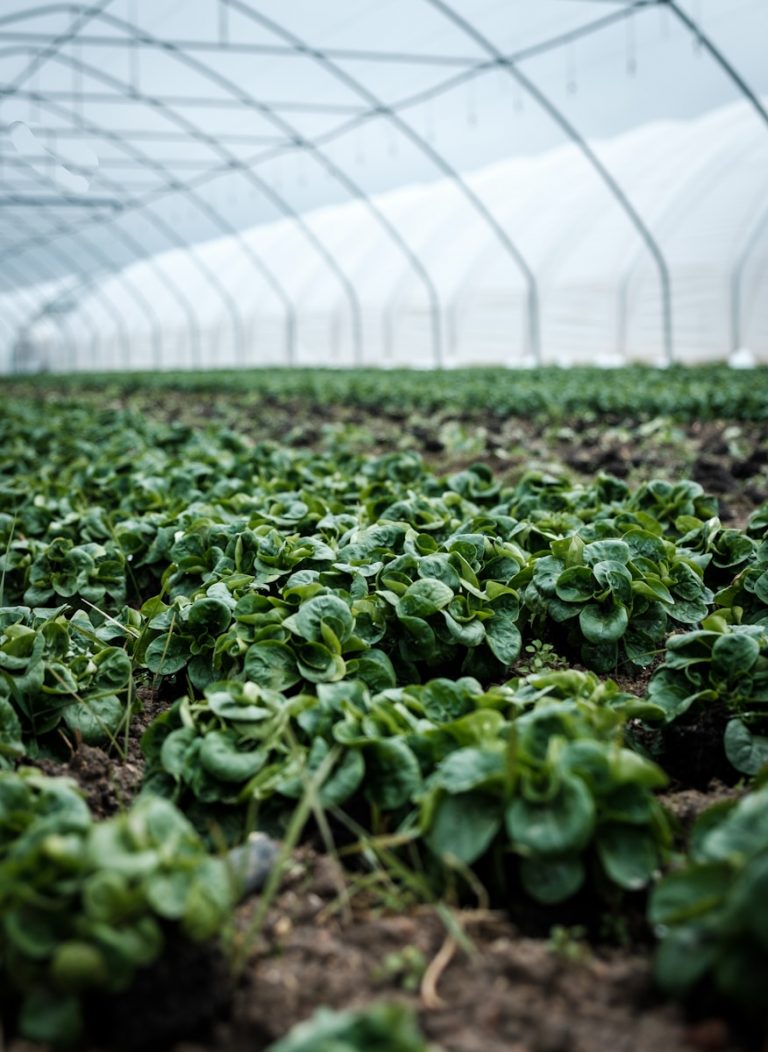Fabric greenhouses are becoming more popular due to their low cost, simplicity of building, and capacity to prolong the growing season. But in contrast to conventional glass greenhouses, maximizing sunlight penetration in fabric buildings requires a distinct strategy.
In this blog, let’s check how to maximize sunlight in fabric greenhouses.
Light Dynamics in Fabric Greenhouses
Fabric greenhouses are made to let in as much light as possible while keeping heat loss to a minimum. Since natural light is essential for photosynthesis, the material is usually transparent, guaranteeing that plants receive an even distribution.
Fabric coverings disperse light more evenly and penetrate deeper into the plant canopy than standard glass. This results in fewer instances of leaf burn and encourages the development of lower leaves, which benefits the health of the plants.
Built-in UV inhibitors in these fabrics protect plants from UV radiation’s potentially damaging effects while allowing in beneficial UV rays that encourage growth.
Strategies to Maximize Sunlight in Fabric Greenhouses
Here are some strategies you can use to maximize sunlight exposure:
1. Choose the Right Plant
Different plants require different amounts of light. Find out what the ideal light levels are for the crops you have chosen, then choose types that will flourish in the light your fabric greenhouse can supply.
Light meters, also known as lux meters, are useful instruments for precisely determining the amount of light in your greenhouse. This lets you determine if your plants are getting enough light to meet their demands. Like the orchid enthusiasts of Hawaii, you may use light meters to determine locations that may benefit from more illumination and maximize plant placement.
The Daily Light Integral (DLI) is a metric used to quantify the total photosynthesis-active radiation (PAR) that plants receive on a given day. Light meters only offer a glimpse of the whole amount of light exposure; DLI provides a more complete image. Like those greenhouse growers in the Great Lakes region, calculating DLI aids in determining whether additional illumination is required for year-round harvests, particularly during the shorter winter days.
2. Think of the Layout
The greenhouse’s shape should be planned to maximize the amount of sunlight all day long. The most efficient designs frequently include a hoop or arch form that lets light in from all sides.
The greenhouse’s orientation needs to line with the sun’s path. A north-south orientation helps in maximizing daytime light absorption in the northern hemisphere.
Also, light may be reflected onto plants in a greenhouse by using reflective materials inside. The lighting for the lower parts of plants can be greatly increased by using reflecting mulches or white ground coverings.
3. Use Light Manipulation Techniques
It might be beneficial to use row covers made of transparent fabrics. Row coverings may preserve daytime heat during chilly nights and offer some diffused shade during hot and bright days to save plants from extreme heat stress.
You can also improve light distribution in your greenhouse by adding reflective surfaces, such as white Mylar sheeting, to the north wall. This approach may increase total light levels for better plant growth, especially for those plants farther away from the south-facing wall, by reflecting sunlight deeper into the building.
4. Make Seasonal Adjustments
Here are additional considerations for agriculture fabric buildings:
- You may need to make little adjustments to your fabric greenhouse arrangement throughout the year as the sun’s angle changes. For example, in the winter, you may capture more of the lower solar angle by changing row covers or removing shade cloths.
- Maintaining enough ventilation in your fabric greenhouse is just as essential as optimizing sunlight. The health of plants may suffer from an accumulation of excessive heat. Make sure to position enough ventilation openings to provide appropriate airflow and temperature regulation.
5. Control Light
You may want to use additional lighting for certain purposes or in poor light. LED grow lights are especially energy-efficient and can be tailored to deliver the precise light wavelengths needed for the best possible plant development.
But when should you use supplemental lighting?
Go for artificial lighting, when natural light is insufficient. This can happen during the winter months when daylight hours are shorter, on cloudy days, or even in specific areas of the greenhouse that don’t receive enough direct sunlight.
For the best development and flowering, some plants require more light than others. If natural light is insufficient, supplemental lighting can guarantee they get the appropriate amounts of light.
Also, you may be able to grow some crops longer by adding more light, which would enable you to harvest your crops sooner or later in the year.
6. Consider Environmental Control
Follow these two main tips:
- Put in Windbreaks: Harsh winds can harm plants and interfere with temperature regulation. Putting up one or two layers of straw on the side of the greenhouse that faces the wind (the upwind side) acts like a barrier. This helps trap heat inside the greenhouse and prevents it from escaping, so you won’t have to work as hard to maintain a comfortable temperature for your plants.
- Double Insulation: Double-insulated fabric coverings are a good option for chilly climes. These offer an additional degree of defence against heat loss at night, enabling you to keep your plants at a more constant and comfortable temperature. For example, ground covers or arches in fabric greenhouses can raise soil temperature by 2°C, aiding winter vegetable growth.
You may establish a completely optimal growth environment in your fabric greenhouse and guarantee the success of your plants all year by combining these tactics with the methods for optimizing sunlight.

0 Comments